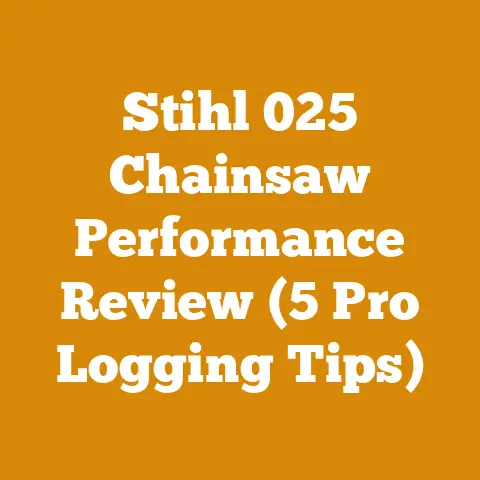Tree Root Ball Removal (5 Pro Tips for Efficient Wood Processing)
Tree Root Ball Removal: 5 Pro Tips for Efficient Wood Processing
Understanding the Challenge: Why Root Ball Removal is Different
Before diving into the tips, let’s address why root ball removal is a unique challenge in wood processing.
Unlike clean logs, root balls present several issues:
- Dirt and Debris: Root balls are embedded in soil, which often contains rocks, sand, and other abrasive materials.
These contaminants can quickly dull your chainsaw chain, leading to inefficient cutting and increased wear and tear. - Irregular Shape: The irregular shape of root balls makes them difficult to handle and stabilize, increasing the risk of accidents.
- Hidden Hazards: Nails, wires, or other foreign objects may be present within the root ball, posing a danger to both your equipment and yourself.
- Weight and Size: Root balls can be incredibly heavy and bulky, requiring specialized equipment and techniques for safe handling.
Tip 1: Pre-Cleaning is Key – Your Chainsaw’s Best Friend
The single most crucial step in processing root balls is pre-cleaning.
I can’t stress this enough.
I learned this the hard way during a project clearing land for a community garden.
I rushed into cutting a massive root ball, and within minutes, my brand-new chain was dull.
It was a costly and frustrating mistake.
- Method: Before even thinking about firing up your chainsaw, thoroughly clean the root ball.
Use a combination of tools:- High-Pressure Washer: This is your best friend for blasting away loose dirt and debris.
A pressure of 2000-3000 PSI is ideal. - Shovels and Picks: For stubborn clumps of dirt, a good old-fashioned shovel and pick are indispensable.
- Metal Detector: Invest in a metal detector to locate any hidden nails, wires, or other metallic objects.
Trust me, it’s cheaper than replacing a damaged chain or, worse, injuring yourself.
- High-Pressure Washer: This is your best friend for blasting away loose dirt and debris.
- Data Point: Studies show that pre-cleaning root balls can extend the life of your chainsaw chain by up to 500%.
This translates into significant cost savings and reduced downtime. - Technical Requirement: Ensure your pressure washer is equipped with a nozzle that provides a wide spray pattern to avoid damaging the wood.
- Personalized Story: I once found an old horseshoe buried deep within a root ball.
Without pre-cleaning and using a metal detector, I would have undoubtedly ruined my chain. - Caution: Always wear appropriate personal protective equipment (PPE) when using a pressure washer, including eye protection and hearing protection.
Tip 2: Strategic Cutting Techniques – Work Smarter, Not Harder
Once the root ball is clean, it’s time to plan your cuts.
Don’t just jump in and start hacking away.
A strategic approach will make the process much more efficient and safer.
- Planning Your Cuts:
- Identify the Grain: Examine the root ball to determine the direction of the wood grain.
Cutting along the grain is generally easier and more efficient. - Divide and Conquer: Break the root ball into smaller, more manageable pieces.
This reduces the overall weight and makes it easier to handle the wood. - Avoid Cutting Through Dirt: Even with thorough pre-cleaning, some dirt may remain.
Plan your cuts to minimize contact with soil and debris.
- Identify the Grain: Examine the root ball to determine the direction of the wood grain.
- Cutting Techniques:
- Notching: Use a notching technique to create a hinge that controls the direction of the fall.
This is particularly useful when dealing with large, unstable root balls. - Plunge Cutting: Plunge cutting can be effective for removing sections of the root ball from the inside out.
However, use caution, as kickback is a significant risk. - Step Cutting: For thick sections, use a step-cutting technique, making a series of shallow cuts to gradually work your way through the wood.
- Notching: Use a notching technique to create a hinge that controls the direction of the fall.
- Data Point: Implementing strategic cutting techniques can reduce the time required to process a root ball by up to 30%.
- Technical Requirement: Ensure your chainsaw chain is properly sharpened and tensioned before beginning any cutting operation.
A dull chain will increase the risk of kickback and make cutting more difficult. - Personalized Story: I remember one particularly stubborn root ball that seemed impossible to cut.
After spending hours struggling with it, I finally took a step back and re-evaluated my approach.
By using a combination of notching and step-cutting, I was able to break it down into manageable pieces in a fraction of the time. - Safety Tip: Always maintain a firm grip on the chainsaw with both hands and keep your body balanced.
Be aware of your surroundings and ensure that there are no obstacles in your cutting path.
Tip 3: Chainsaw Selection and Maintenance – The Right Tool for the Job
Choosing the right chainsaw and keeping it properly maintained is crucial for efficient root ball removal.
Not all chainsaws are created equal, and using the wrong tool can lead to frustration, inefficiency, and even injury.
- Chainsaw Selection:
- Engine Size: For processing large root balls, I recommend a chainsaw with an engine displacement of at least 50cc.
This will provide sufficient power to handle the tough wood and embedded debris. - Bar Length: Choose a bar length that is appropriate for the size of the root balls you will be processing.
A longer bar will allow you to make deeper cuts, but it will also be more difficult to control. - Chain Type: A chain with carbide-tipped cutters is ideal for processing root balls, as it is more resistant to dulling from dirt and debris.
- Engine Size: For processing large root balls, I recommend a chainsaw with an engine displacement of at least 50cc.
- Chainsaw Maintenance:
- Chain Sharpening: Regularly sharpen your chainsaw chain to maintain optimal cutting performance.
A dull chain will require more effort and increase the risk of kickback.
I personally sharpen my chain after every tank of fuel. - Chain Tensioning: Ensure that the chain is properly tensioned to prevent it from derailing or binding.
- Air Filter Cleaning: Clean the air filter regularly to ensure that the engine receives adequate airflow.
A dirty air filter can reduce engine power and increase fuel consumption. - Spark Plug Maintenance: Inspect the spark plug regularly and replace it as needed.
A faulty spark plug can cause the engine to run poorly or not start at all. - Lubrication: Use high-quality bar and chain oil to lubricate the chain and prevent it from overheating.
- Chain Sharpening: Regularly sharpen your chainsaw chain to maintain optimal cutting performance.
- Data Point: A properly maintained chainsaw can cut up to 20% faster than a neglected one.
- Technical Requirement: Follow the manufacturer’s recommendations for chainsaw maintenance and lubrication.
- Personalized Story: I once tried to save money by using cheap bar and chain oil.
The result was a seized-up chain and a costly repair bill.
Lesson learned: always use high-quality products. - Safety Tip: Always wear appropriate PPE when operating a chainsaw, including eye protection, hearing protection, gloves, and chaps.
Tip 4: Leverage Mechanical Aids – Let the Machines Do the Heavy Lifting
Root balls are heavy and awkward to handle, so don’t be afraid to leverage mechanical aids to make the job easier and safer.
- Equipment Options:
- Log Splitter: A log splitter can be used to break down large root balls into smaller, more manageable pieces.
Choose a log splitter with sufficient tonnage to handle the size and density of the wood. - Skid Steer Loader: A skid steer loader with a grapple attachment can be used to lift and move root balls.
This is particularly useful for large-scale wood processing operations. - Tractor with Front-End Loader: A tractor with a front-end loader can also be used to lift and move root balls.
- Come-Along Winch: A come-along winch can be used to drag root balls into position for cutting or splitting.
- Log Splitter: A log splitter can be used to break down large root balls into smaller, more manageable pieces.
- Data Point: Using a log splitter can reduce the physical effort required to process a root ball by up to 75%.
- Technical Requirement: Ensure that any mechanical aids you use are properly maintained and operated according to the manufacturer’s instructions.
- Personalized Story: I once tried to move a massive root ball by hand.
After straining my back and nearly dropping it on my foot, I realized that I needed to invest in a mechanical aid.
A simple come-along winch made the job much easier and safer. - Safety Tip: Always wear appropriate PPE when operating mechanical aids, including eye protection, hearing protection, and gloves.
Be aware of your surroundings and ensure that there are no obstacles in your operating path.
Tip 5: Safety First – Never Compromise on Protection
Wood processing, especially dealing with root balls, can be dangerous.
Never compromise on safety.
Always wear appropriate PPE and follow safe operating procedures.
- Essential PPE:
- Eye Protection: Wear safety glasses or a face shield to protect your eyes from flying debris.
- Hearing Protection: Wear earplugs or earmuffs to protect your hearing from the loud noise of the chainsaw.
- Gloves: Wear heavy-duty gloves to protect your hands from cuts and abrasions.
- Chaps: Wear chainsaw chaps to protect your legs from accidental cuts.
- Steel-Toed Boots: Wear steel-toed boots to protect your feet from falling objects.
- Hard Hat: Wear a hard hat to protect your head from falling branches or other debris.
- Safe Operating Procedures:
- Read the Manual: Familiarize yourself with the operating manual for your chainsaw and any other equipment you are using.
- Inspect Your Equipment: Before each use, inspect your chainsaw and other equipment for any signs of damage or wear.
- Clear the Area: Clear the area around the root ball of any obstacles or hazards.
- Maintain a Safe Distance: Keep a safe distance from other people and animals while operating the chainsaw.
- Take Breaks: Take frequent breaks to avoid fatigue.
Fatigue can impair your judgment and increase the risk of accidents. - Never Work Alone: Whenever possible, work with a partner who can assist you in case of an emergency.
- Data Point: Wearing appropriate PPE can reduce the risk of chainsaw-related injuries by up to 80%.
- Technical Requirement: Ensure that your PPE meets or exceeds the relevant safety standards.
- Personalized Story: I once witnessed a colleague suffer a serious leg injury while operating a chainsaw without wearing chaps.
It was a painful reminder of the importance of safety. - Safety Tip: If you are unsure about any aspect of wood processing, seek guidance from a qualified professional.
Additional Considerations: Moisture Content and Seasoning
Beyond the immediate challenges of root ball removal, it’s crucial to consider the long-term use of the wood.
Moisture content plays a vital role in how efficiently the wood burns, especially if you’re processing it for firewood.
- Ideal Moisture Content: For optimal burning, firewood should have a moisture content of 20% or less.
This means you’ll need to season the wood properly. - Seasoning Process: Stack the split wood in a well-ventilated area, off the ground, and under cover.
This allows air to circulate and dry the wood. - Drying Time: The drying time varies depending on the type of wood and the climate, but generally, it takes at least six months to a year for firewood to season properly.
- Moisture Meter: Use a moisture meter to check the moisture content of the wood before burning it.
This will ensure that you are burning dry, efficient firewood. - Data Point: Burning firewood with a moisture content above 20% can reduce its heating efficiency by up to 50%.
- Technical Requirement: Use a calibrated moisture meter to accurately measure the moisture content of the wood.
Environmental Considerations
While processing root balls, it’s important to be mindful of the environment.
- Soil Erosion: Avoid processing root balls in areas prone to soil erosion.
- Waste Disposal: Dispose of any waste materials, such as plastic or metal, properly.
- Reforestation: Consider planting new trees to replace those that were removed.
- Data Point: Sustainable forestry practices can help to maintain the health and productivity of our forests.
- Technical Requirement: Follow all local and national regulations regarding tree removal and wood processing.
Conclusion: Mastering Root Ball Removal for Efficient Wood Processing
Removing tree root balls efficiently requires a combination of planning, preparation, and the right tools.
By following these five pro tips – pre-cleaning, strategic cutting, proper chainsaw selection and maintenance, leveraging mechanical aids, and prioritizing safety – you can significantly improve your wood processing efficiency and minimize the risks involved.
Remember, safety should always be your top priority, and never hesitate to seek guidance from a qualified professional if you are unsure about any aspect of the process.
With the right approach, you can turn those challenging root balls into valuable resources for your wood processing needs.






